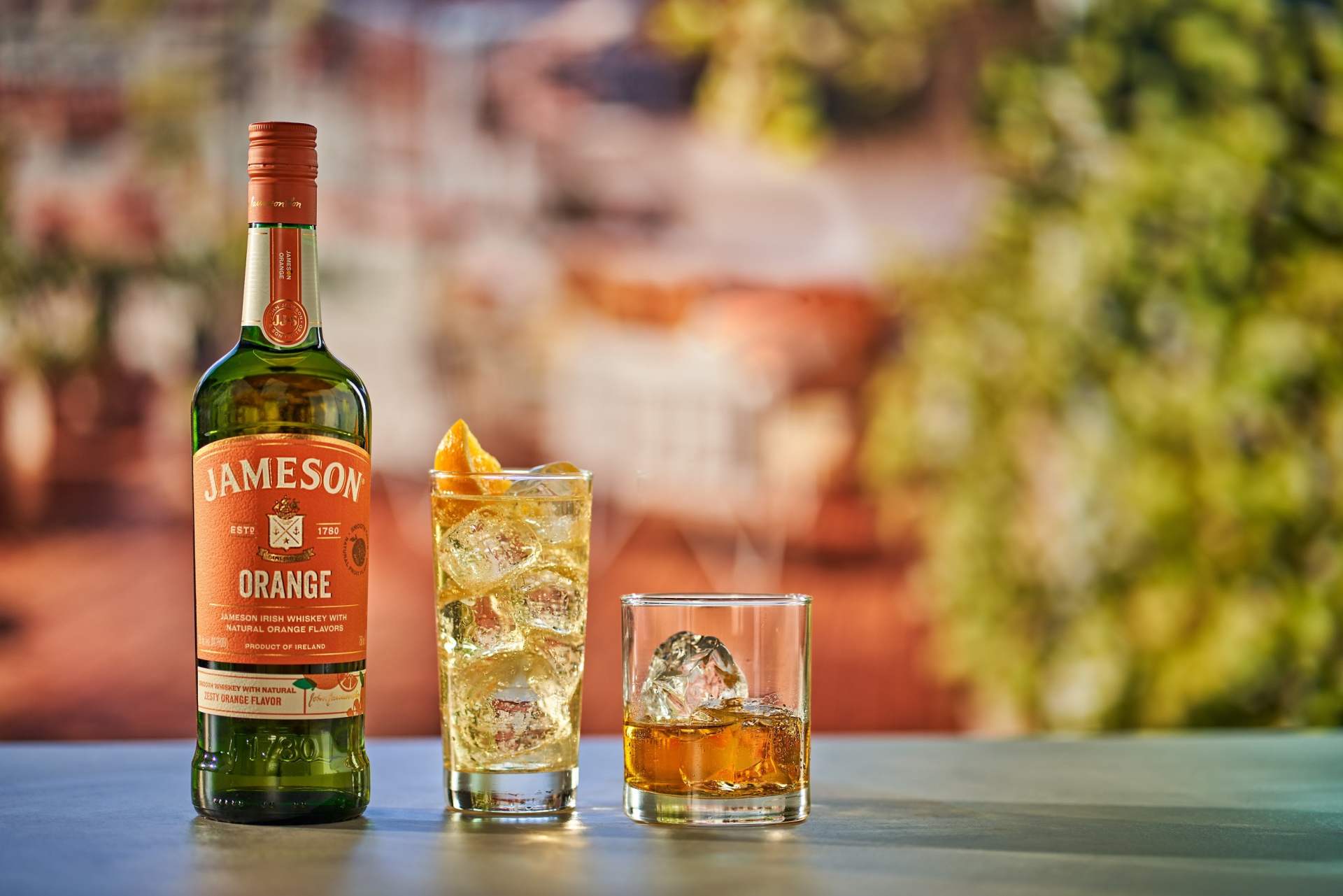Launch of the Irish: Whiskeys You Want in 2022
by David Klemt

Tomorrow is National Irish Coffee Day. What better time to take a look at the Irish distilleries and releases to look out for in 2022?
From the looks of things, Ireland’s distillers are set to unleash a flood of enticing whiskeys this year. This bodes well for whiskey lovers, Irish coffee and St. Patrick’s Day fans, and your menu.
Below you’ll find ten bottles to update the Irish whiskey section of your menu. Sláinte!
Jameson Orange ($24.99 SRP)
From arguably the most recognizable name in Irish whiskey comes Jameson Orange . You can check out the bottle in the image above. With natural orange flavor, Jameson says Orange works well neat, on the rocks, and in cocktails. In particular, simple drinks like Jameson Orange and Cranberry.
Bushmills Causeway Collection 27-Year-Old Bourbon Cask ($745 SRP)
You can take two things away from this Bushmills bottle’s name. First, this ultra-premium Irish whiskey comes with hefty price tag. Second, the maturation process involves bourbon barrels. In fact, the first 21 years of maturing takes place in first-fill bourbon casks from Kentucky.
Tullamore DEW XO Caribbean Rum Cask Finish ($39.99 SRP)
Looking to switch things up with your tiki or nautical bar menu? Want to offer a new take on tropical drinks? Replace the rum with Tullamore DEW XO Caribbean Rum Cask Finish. To craft this unique expression, Tullamore DEW finishes their whiskey in former demerara rum casks, which impart notes of bananas, dates, and raisins.
Midleton Very Rare Dair Ghaelach Kylebeg Wood, Tree No. 2 ($352 SRP)
An important element of the whiskey experience—all spirits, ideally—is getting a taste of the region from which originates. With Dair Ghaelach, which translates to “Irish oak” in Irish or Scottish Gaelic, Midleton aims to deliver a taste of the heart of Ireland. They do this by finishing this expression in casks made from virgin Irish oak from, of course, Kylebeg Wood.
Method And Madness Single Malt ($95 SRP)
Micro Distillery in Midleton, Ireland, which you’ll find in County Cork, first laid this whiskey down in 2002. The liquid matures in bourbon casks before finishing in Fresnch Limousin Oak barrels. Expect cereal malt notes on the nose; barley, ice cream cone and cinnamon stick on the palate; and bon-bons on the finish.
The Pogues Single Malt ($24.99 SRP) and Blended ($28.99 SRP)
Yep—the Pogues. The Celtic band teamed up with Master Distiller Frank McHardy to craft two Irish whiskeys. Single Malt, packaged in a bold red bottle, offers a smooth sip with notes of chocolate, cinnamon, marshmallow, nougat, wood, and spice. The Pogues Blended Irish Whiskey combines grain and malt whiskeys, delivering dark chocolate, citrus, dark fruit, and spice on the nose and palate.
Roe & Co. ($29.99 SRP)
Straight out of Dublin, Roe & Co. produces creamy smooth, warm and inviting blended Irish whiskey. This bottle just may become a favorite among your guests on St. Patrick’s Day this year.
Micil Inverin Small Batch ($51.99 SRP)
This bottle comes from the first distillery to open legally in Galway, a coastal town on the west side of Ireland. Founder Pádraic Ó Griallais is a sixth-generation poitín (very generally speaking, “Irish moonshine”) distiller. The Scotch drinkers among your guests will appreciate the charred wood and peat characteristics of Iverin Small Batch. I would definitely try this in a Penicillin.
Sailor’s Home The Journey ($51.99 SRP)
Hailing from Limerick, Ireland, Sailor’s Home crafts four expressions of Irish whiskey. For this roundup, I’m sharing The Journey, a Gold Medal winner at the 2021 International Spirits Challenge. As the distillery suggests, this may become your guests’ new go-to Irish whiskey, and likely in short order. First, whiskey is aged in virgin American oak casks. The liquid is then moved to American bourbon barrels. Finally, that liquid is combined with malt Irish whiskey that was matured in American bourbon barrels and finished in Jamaican rum casks. As the distillery says, “No other Irish whiskey is made like this.”
Shanky’s Whip ($24.99 SRP)
Fine, this isn’t strictly an Irish whiskey. Shanky’s Whip is a blend of liqueur and Black Irish whiskey. Perfect for shooting, in a highball with cola, or dropped into a pint of stout.
Prices in USD. Image: Jameson









